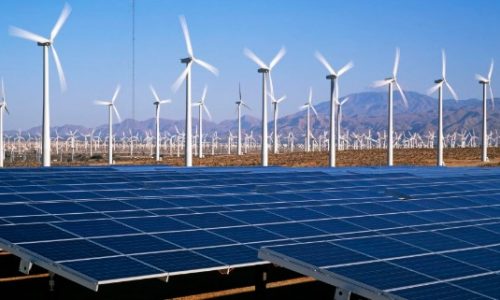Wood Mackenzie, an Energy Consultant from the United Kingdom projects that Indonesia would become a gas importer starting in 2040.
Established in 1973, Wood Mackenzie is a research and consulting institution from the United Kingdom. The company focuses on global research and consultancy supplying data, written analysis, and consultancy advice to energy, chemicals, renewables, metals and mining industries.
Wood Mackenzie estimates that Indonesia’s gas supply will be depleted and unable to cover all domestic market demand, this will cause Indonesia to depend on gas imports in the future.
They project that gas demand and consumption in Indonesia will continue to increase in line with economic growth, the use of fuel for power plants and industrial raw materials.
Andrew Harwood, Research Director Upstream and Carbon Management for Wood Mackenzie said that the decline in domestic (Indonesian) gas production could increase the risk of shifting Indonesia’s status as a gas exporter to becoming a gas importer to meet the needs of the industrial sector.
“Currently domestic oil and gas production is facing growing demand and this will change Indonesia from an exporting country to a natural gas importing country,” said Harwood, on July 26, 2023.
Wood Mackenzie together with the Indonesia Petroleum Association (IPA) said that 63% of Indonesia’s total gas demand comes from the industrial sector.
The gas demand project from the industrial sector will grow significantly up to 3.8% per year in a business-as-usual scenario. Meanwhile, domestic gas demand will grow by up to 10.3% in an optimistic scenario per year.
Meanwhile, according to them, the domestic oil and gas production will decrease by up to 12.6% in the business-as-usual scenario and 4.3% in the optimistic scenario.
Wood Mackenzine also predicted that domestic oil and gas production will be below the target of 1 million barrels of oil per day (BOPD) and 12 billion standard cubic feet of gas per day (BSCFD) in 2030. This could happen if the Indonesian government does not optimize investment in exploration and new field developments.
On the other hand, increasing investment in the upstream oil and gas sector is considered important considering that Indonesia’s long-term oil and gas production relies on old fields with high exploration risks.
“Policy makers must take into account energy security and Indonesia needs a progressive approach in the upstream sector,” he said.
“The benefits of increasing domestic gas production can maintain Indonesia as an exporter, reduce imports, and protect against international price fluctuations,” he added.
BP data on Indonesia gas production
However, based on British Petroleum (BP) data, Indonesia’s gas production is 59.29 billion cubic meters in 2021. This figure is down 0.41% compared to the previous year.
Thus, national gas production fell for the tenth time in the last decade. When compared to the position in 2021, Indonesia’s gas production fell by 19.01 billion cubic meters or 24.27%.
Meanwhile, Indonesia’s gas consumption in 2021 is 37.08 billion cubic meters. This figure decreased by 1.16% from the previous year. When compared to the position in 2012, domestic gas consumption also fell by 5.89 billion cubic meters or 13.71%.
The decline in gas production faster than consumption has narrowed Indonesia’s gas balance to 22.21 billion cubic meters in 2021 compared to 35.33 billion cubic meters a decade ago.
Ministry of Energy and Mineral Resources response
Tutuka Ariadji, Director General of Oil and Gas (Migas) from the Ministry of Energy and Mineral Resources (ESDM) said he was confident that Indonesia’s domestic upstream oil and gas industry would be able to meet national gas supplies until 2040 and dismissed the projection from Wood Mackenzie.
He said that in the future domestic gas supply will be at optimal conditions if the gas production target of 12 billion standard cubic feet per day (BSCFD) in 2030 is achieved.
He considered the certainty of domestic gas supply to be more reliable if the results of gas exploration in the Andaman Sea in Aceh and BP’s Agung Oil and Gas Block yielded positive results.
“If the production target of 12 BSCFD can be achieved, I am optimistic that domestic gas supply in 2040 will still be okay,” he said.
He acknowledged that domestic gas absorption tends to increase due to massive mineral downstream activities, the majority of which use gas as a raw material and fuel for power generation in refineries and smelters.
According to the Ministry, domestic gas demand in 2022 will reach 3.6 BSCFD or 68% of total annual production. Meanwhile, the remaining 1.7 BSCFD or 32% is allocated for export needs.
Meanwhile, domestic gas absorption is still stagnant, and decreased from 3.8 BSCFD in 2017 to 3.6 BSCFD in 2022. Domestic gas absorption is targeted to increase to 3.8 BSCFD in 2023.
Meanwhile, the domestic upstream oil and gas investment climate tends to improve with splits or 50:50 production sharing contracts for the development of high risk oil and gas fields.
In addition, on the regulatory side, the Government is pushing the People’s Representative Council of Indonesia (DPR RI) to finalize the revision of the Oil and Gas Law to increase domestic investment certainty.









